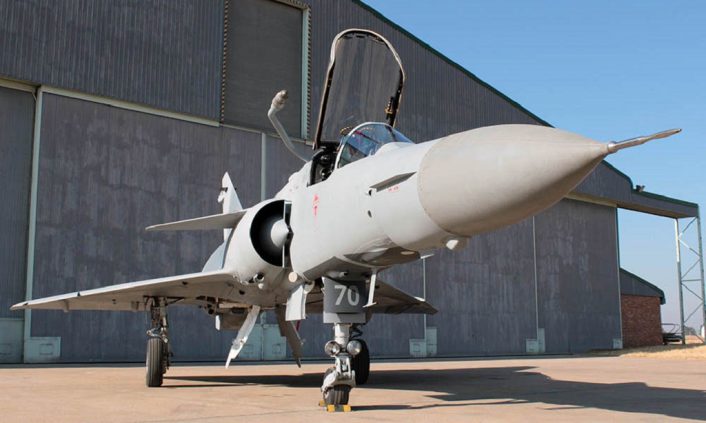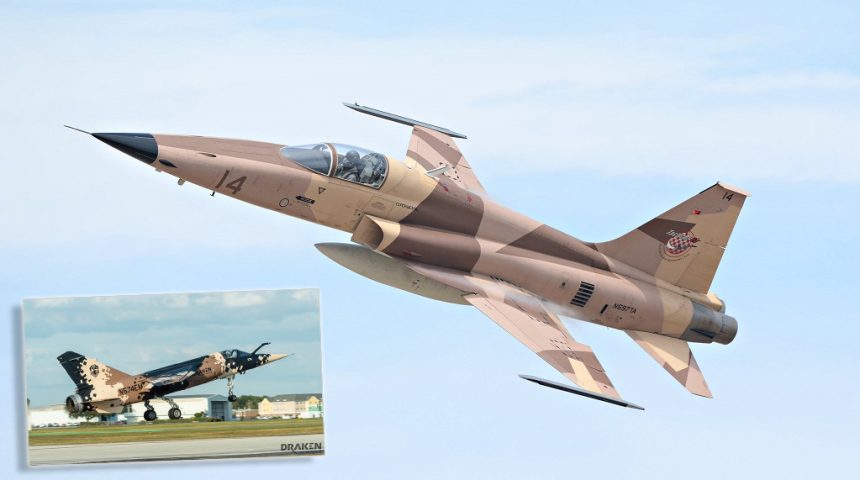The two companies join ATAC to provide Red Air aircraft to support U.S. Air Force fighter pilot training.
About a week ago we reported about the contract awarded to ATAC on July 21, 2020 to provide adversary training at Luke and Holloman Air Force Bases as part of the Combat Air Force/Contracted Air Support (CAF/CAS) program. Tactical Air Support and Draken International have been selected within the same program to work at three air bases.
TacAir has been awarded a contract up to USD 90,4 million for up to four and half years to provide 800 flight sorties per year at Kingsley Field Air National Guard Base (Oregon), in support of the F-15C/D Formal Training Unit (FTU). The company already provides adversary training to the U.S. Navy at NAS Fallon (Nevada) supporting the Naval Fighter Weapons School (NFWS), better known as TOPGUN, and the other units of the Naval Aviation Warfighting Development Center (NAWDC) using their highly upgraded F-5AT jets.
The F-5ATs (or Advanced Tigers) are former Jordanian F-5Es Tiger II acquired in 2017 and upgraded to replicate existing and emerging threat aircraft. Among the modifications there are a Duotech Nemesis radar and Argus Radar Warning Receiver (RWR), Hands On Throttle-And-Stick (HOTAS) controls, datalinks, custom Garmin 3000 flight deck with 14-inch main display and two 5×7 touchscreen controllers (the same system is used also on the Textron Scorpion and the Diamond DART-550) with a L3Harris Venom air mission software suite and Thales Scorpion Helmet Mounted Display (HMD).
Other than the standard CATM-9 missiles (captive inert variant of the AIM-9 Sidewinder) and the AN/ASQ-T50 pod (also referred as P5 pod, used for combat simulation during training), TacAir says that the F-5AT can also be integrated with an InfraRed Search and Track (IRST) system, Electronic Countermeasures (ECM) pods and air-to-ground ordnance.
Mick Guthals. Sr. Manager, Business Development at TacAir, told to Air Force Magazine’s reporters that the company plans to support the F-15C/D Eagle training with up to six F-5s by the end of September.

Draken International was selected to work at two different air bases, with a contract up to USD 74,5 million for 1,000 flight sorties per year at Seymour Johnson AFB (North Carolina), home of the F-15E Strike Eagle FTU, and a contract up to USD 28,2 million for 530 flight sorties per year at Kelly Field (Texas, part of Joint Base San Antonio-Lackland), home of the Air National Guard F-16 Fighting Falcon FTU. Similarly to TacAir, Draken International already flies in support of the U.S. Air Force Weapons School and Red Flag exercises at Nellis AFB (Nevada).
The company has a mixed fleet of AerMacchi MB-339s, MiG-21s, A-4K/Ns, L-39s and the newly acquired Mirage F-1Ms and Denel (formerly Atlas) Cheetahs, a South African major upgrade of the Mirage III with technology from the Israeli IAI Kfir, which is in turn derived from the Mirage 5.
Another air base that was expected to receive Red Air support is Eglin AFB (Florida). According to Air Force Magazine, Air Combat Command spokesperson Leah Garton said that ACC is working on an environmental assessment before awarding a contract for adversary air sorties at Eglin AFB.
ACC said in a statement: “The companies will provide realistic and challenging advanced adversary air training. The air support services are expected to begin in late summer 2020 at each location”. As we said when the first contract was awarded to ATAC, the majority of the “Red Air” aircraft during air-to-air combat training at FTUs are provided by the resident units, leaving less aircraft and instructors available for the students. By using contracted Aggressors ACC aims to solve this problem, easing at the same time the wear of the resident unit’s aircraft and allowing more pilots to be trained.









